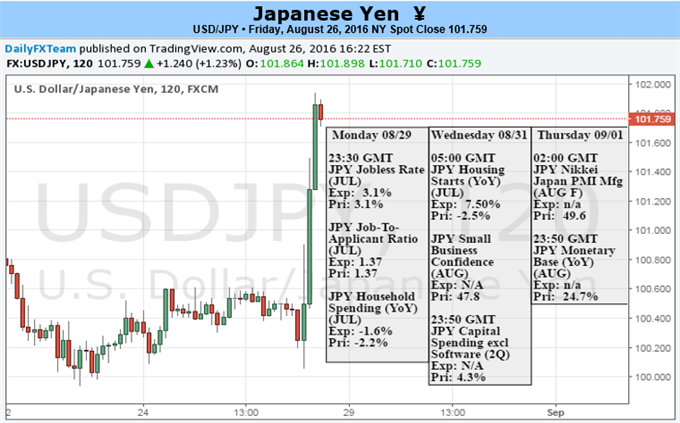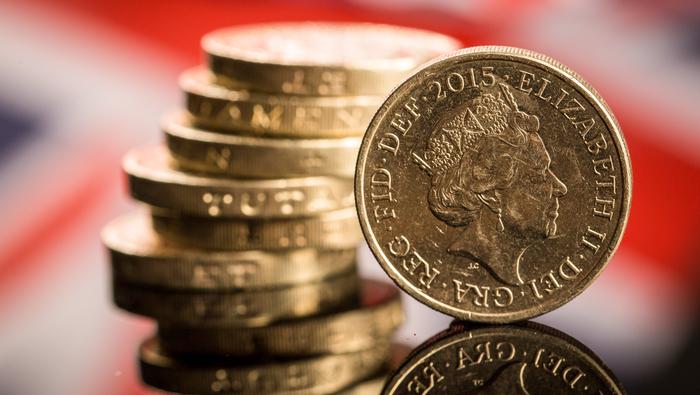
Fundamental Forecast for the Japanese Yen: Bearish
- Japanese CPI data shows fourth-consecutive month of deflation, USD/JPY remains unmoved
- Retail FX traders remain heavily long the US Dollar versus the Yen, but large speculators are the opposite
- It’s still all about the US Federal Reserve
What do retail traders’ USD/JPY trade decisions say about the price trend? Find out here.
The Japanese Yen fell versus the US Dollar for the first week in five on the heels of a US Federal Reserve-led Dollar surge. A relatively busy week of US economic event risk ahead makes further USD-driven volatility likely, and it will be important to watch whether the USD/JPY continues to hold above the psychologically-significant ¥100 mark.
Weaker-than-expected Japanese inflation data should have sent the Yen lower versus the US Dollar (USD/JPY higher) as National Consumer Price Index figures showed the country saw deflation for the fourth-consecutive month. The persistent risk of deflation would normally force the Bank of Japan to cut interest rates further into negative territory and engage in other forms of monetary policy easing—all of which would likely hurt the JPY exchange rate against major counterparts. And yet traders showed little concern as the JPY remained relatively motionless despite the key CPI data disappointment.
The lack of market reaction likely reflects the fact the Bank of Japan has fairly limited scope to ease monetary policy even further. Its “Loan Policy Rate” is already negative, and pushback from Japanese banks will like make the BoJ reticent to push rates further into negative territory. It is also quite clearly running out of room for Quantitative Easing purchases as its total balance sheet currently stands at a whopping 85 percent of national GDP. It is quite literally running out of things to buy as it already owns 40 percent of outstanding Japanese Government Bonds.
The threat of further Bank of Japan easing thus rings a bit hollow as most of the damage on the JPY is arguably done, and this helps explain why markets have proven insensitive to domestic economic data. It would take an especially large surprise out of upcoming Japanese Jobless Rate, Retail Sales, Industrial Production, and Consumer Confidence data releases to force a meaningful reaction out of the JPY and broader markets.
Market attention will instead remain focused on whether the US Federal Reserve is likely to raise interest rates through the foreseeable future. Fed Funds interest rate futures currently predict a 40 percent chance the US Federal Reserve will raise rates in September—up noticeably from the 15 percent seen 10 days ago. All else equal this should support the US Dollar versus the Japanese Yen. And yet recent CFTC Commitment of Traders data clearly shows large speculators remain heavily net-short USD/JPY.
At a certain point these traders will lose patience given the cost of borrowing USD in order to buy the lower-yielding JPY, and the threat of short-covering adds topside risk to the USD/JPY. The coming week’s US Nonfarm Payrolls report could go a long way in improving the odds of a Fed rate hike. It will be critical to watch whether traders may finally force the USD/JPY out of its long-standing trading range. - DR





